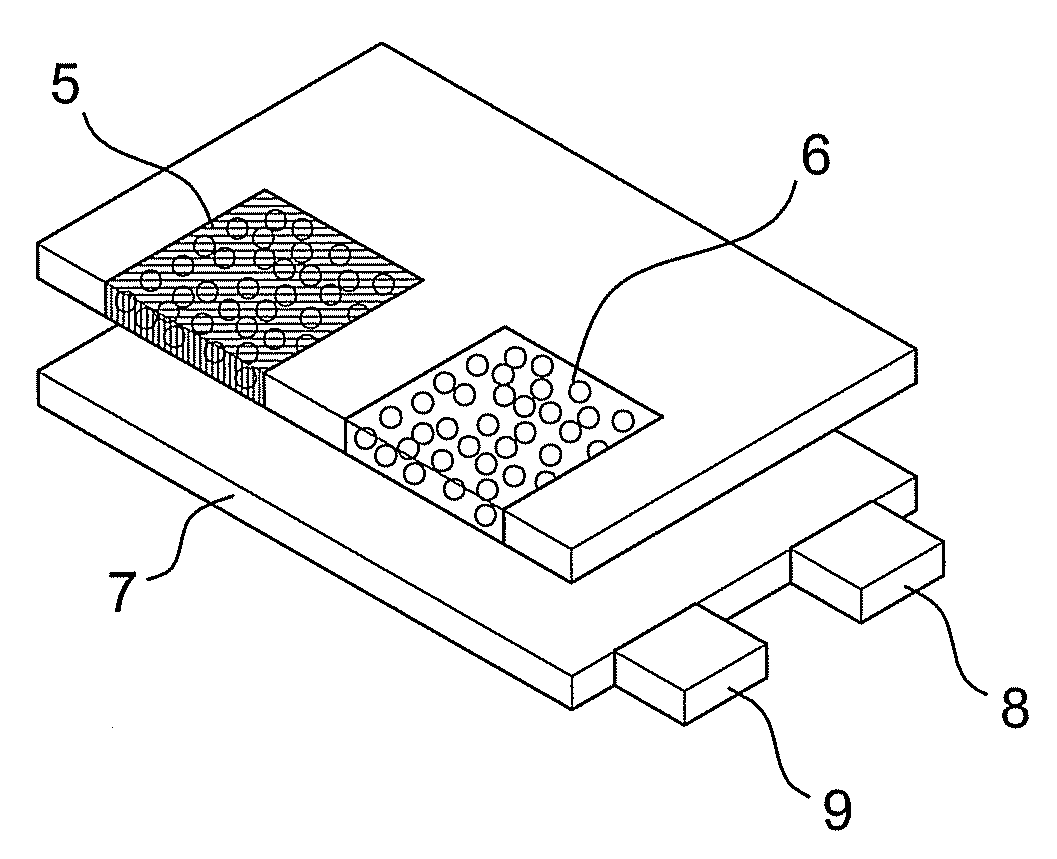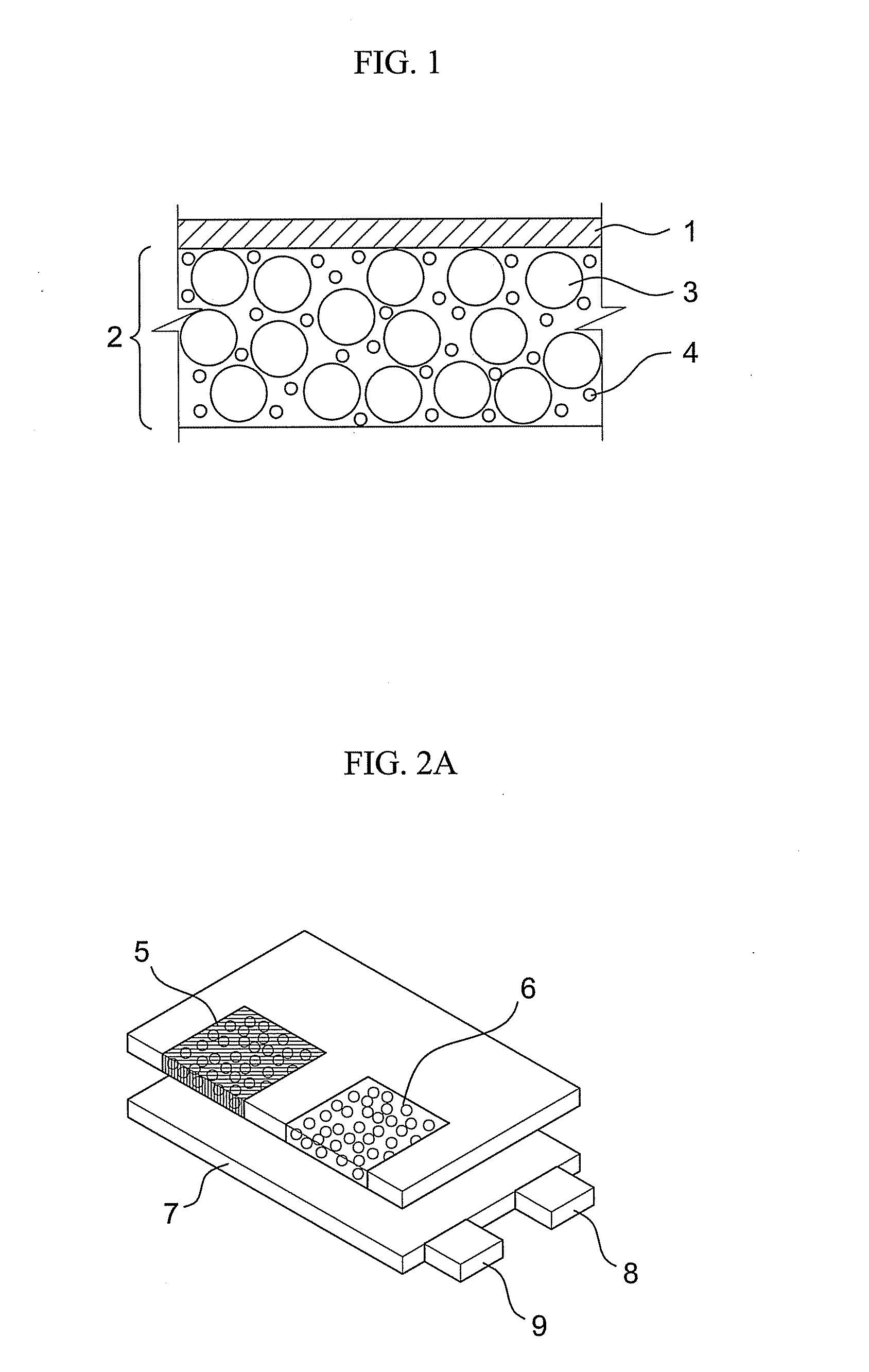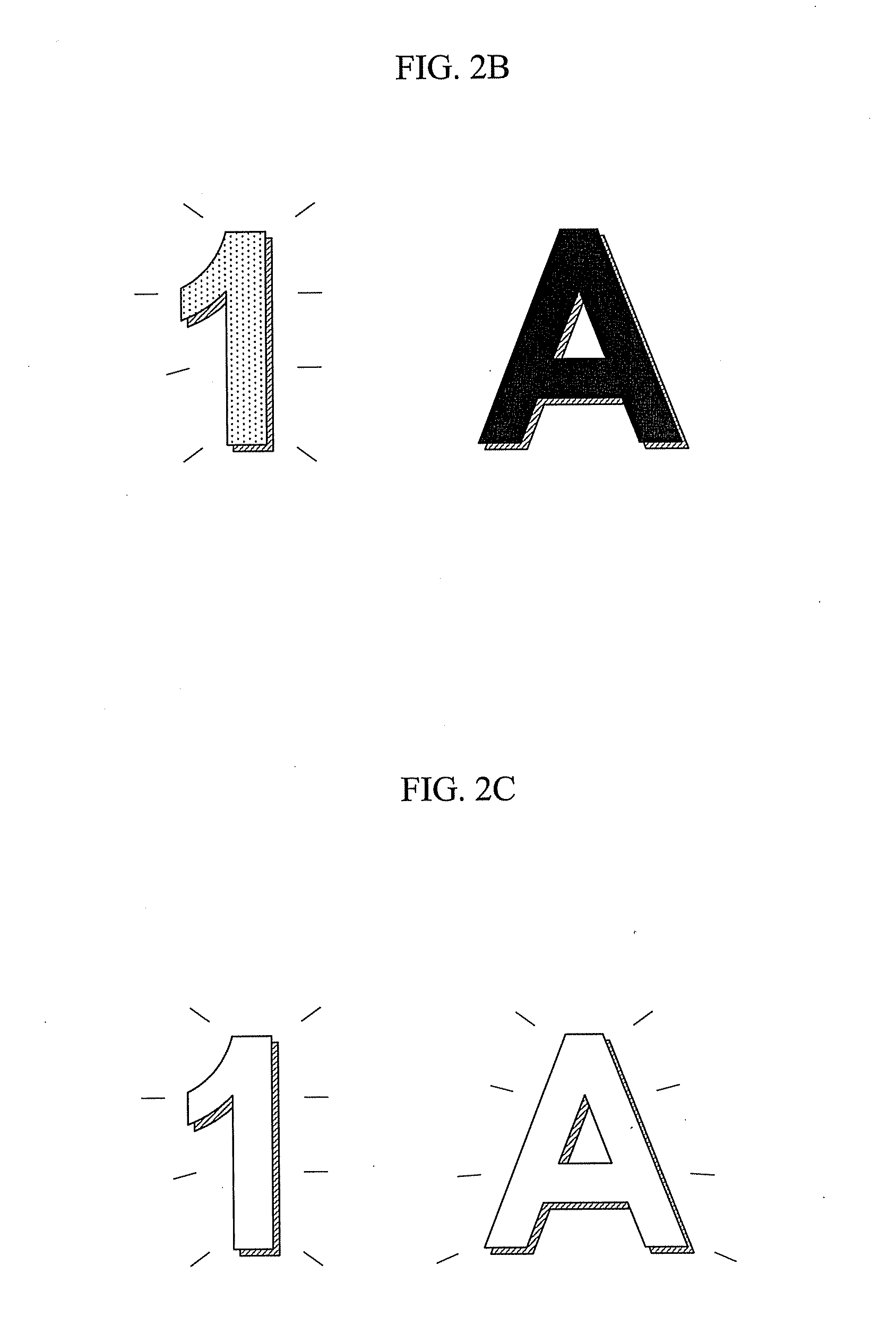Image display device with plural light emitting diodes
a light-emitting diode and image-based technology, applied in the direction of identification means, static indicating devices, instruments, etc., can solve the problems of copyright problems, color implementation,
- Summary
- Abstract
- Description
- Claims
- Application Information
AI Technical Summary
Benefits of technology
Problems solved by technology
Method used
Image
Examples
example 1 to 4
Formation of a First Optical Filter Layer Containing Bi2O3
[0049]8.35 g of TiO2, 33.3 g of Bi2O3, 10 g of transparent ink, 18 g of cyclohexane, and balls with a diameter of 1 cm and 0.3 mm were mixed with one another by paint shaking for four hours. Thereafter, a TiO2 / Bi2O3 film was formed as a first optical filter layer using a silk printing method. In the case of the number of TiO2 / Bi2O3 coatings, the number of coatings was set to “2” in Example 1, the number of coatings was set to “3” in Example 2, the number of coatings was set to “4” in Example 3, and the number of coatings was set to “5 in Example 4.
examples 5 to 7
Lamination of the Second Optical Filter Layer
[0054]In Examples 5 to 7, the blue color filter layer as the second optical filter layer is coated in different concentrations on the TiO2 / Bi2O3 film (the number of coatings; 5) as the first optical filter layer fabricated in Example 4 to thereby fabricate a complex optical filter layer. Here, the blue color filter layer was fabricated such that a blue color filter (Inorganic=CoAl2O3) contained in an amount of 20 wt % in a solvent prophylene glycol monomethyl ether acetate (PGMEA) was added to 12.5 g of transparent ink so that the content (wt %) of the blue color filter becomes 1.5 wt % (Example 5), 2.0 wt % (Example 6) and 9.0 wt % (Example 7), respectively, and then, the mixture was distributed with tinky.
experimental example 3
White Color Implementing Effect of the Second Optical Filter Layer
[0055]In Experimental Example 3, in order to confirm white color implementing effect of the second optical filter layer, a complex light filter layer composed of the TiO2 / Bi2O3 film layer (first optical filter layer) and the blue color filter layer fabricated in Examples 5 to 7 was put on the second light emitting diode, i.e., the white light emitting diode, and the intensity of the blue and yellow lights transmitted at the time of light emission from the white light emitting diode was measured (Experimental Examples 3-a to 3-c). Here, the intensity of the light was measured by using Ocean Optics USB 100 detector. A result of the measurement is shown in Table 3 below and FIG. 11.
TABLE 3Color filterBlueYellowBlue / wt %(466 nm)(551 nm)Yellow(TiO2 / Bi2O3wave-wave-ratioExperimentSamplecoatings Fivelengthlength(peak No.No. / times)intensityintensityheight)ExperimentalExample 4047.4748.470.98Example 2-dExperimentalExample 51.54...
PUM
 Login to View More
Login to View More Abstract
Description
Claims
Application Information
 Login to View More
Login to View More - R&D
- Intellectual Property
- Life Sciences
- Materials
- Tech Scout
- Unparalleled Data Quality
- Higher Quality Content
- 60% Fewer Hallucinations
Browse by: Latest US Patents, China's latest patents, Technical Efficacy Thesaurus, Application Domain, Technology Topic, Popular Technical Reports.
© 2025 PatSnap. All rights reserved.Legal|Privacy policy|Modern Slavery Act Transparency Statement|Sitemap|About US| Contact US: help@patsnap.com



